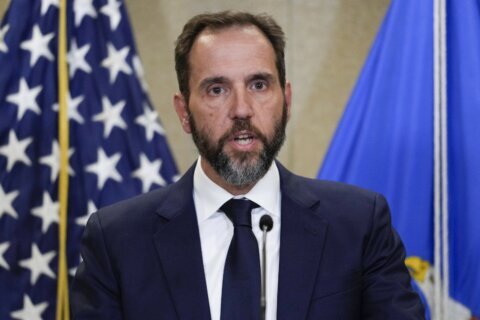For some parents, the term “sex ed” conjures memories of dated videos and cringe-inducing lessons on puberty or how babies are made.
But a good school-based sex education curriculum should be much more than that, encompassing multiple issues related to human growth and development, experts say. In addition to basic facts about puberty, sex and contraception, lessons can cover topics like healthy relationships, sexual violence prevention, body image, sexual orientation and gender identity.
“Just because you teach a young person about how to stay safe and what sex and sexuality is, you’re not encouraging them to become sexually active,” says Michelle Slaybaugh, director of social impact and strategic communications at SIECUS: Sex Ed for Social Change, a national group that advocates for inclusive sex education. “You’re giving them the tools to make decisions about their bodies and their lives that best suit them as individuals.”
Why Sex Education Matters
Research shows that comprehensive, culturally responsive and inclusive sex education programs help prevent intimate partner violence and help young people develop healthy relationships. These programs have also been shown to reduce rates of sexual activity, sexual risk behaviors, adolescent pregnancy and sexually transmitted infections.
Sex ed “promotes healthy behaviors,” says Laurie Dils, associate director of content, health and sexual health education at the Washington Office of Superintendent of Public Instruction. “That’s really what we are aiming for as educators, equipping young people with education and skills so that they can make healthy decisions that fit with their own values and their family’s values.”
But in public school, the quality of sex education your child will receive — or whether they will receive any at all — depends largely on the state and district you live in. There are no federal guidelines for sex education, and currently only 18 states require program content to be medically accurate, according to recent data from the Guttmacher Institute, a research and policy organization focused on sexual health and reproductive rights.
“Most young people have access to the internet,” Slaybaugh says. “So if we are not providing them instruction that is medically accurate and age-appropriate, we are leaving it to chance for them to find something on the internet, i.e., porn, and then they think that’s what sex and sexuality is.”
[READ: Few States Require LGBTQ-Inclusive Sex Education]
Sex Education Requirements by State
Sex education standards vary by state — with some not having any curriculum requirements in schools. As of June 2022, 39 states plus Washington, D.C., mandate sex education, HIV education or both, according to Guttmacher Institute data.
Unlike sex education, HIV and STI instruction only focus on concepts like pregnancy prevention and risk reduction. “But sexuality touches our lives in so many other ways, especially when it comes to being inclusive to diverse people, families and experiences,” Slaybaugh says.
Thirty-nine states and D.C. either stress or require abstinence to be covered when sex education is taught. Meanwhile, only 20 states require provision of information on contraception, Guttmacher Institute research found.
Slaybaugh says that abstinence-only teachings, sometimes referred to as sexual risk avoidance, are often “rooted in shame.” For example, she points to one common lesson in which youth are asked to chew up gum and spit it out, then told the chewed up gum is a representation of a person who had sex before marriage.
“Abstinence-only programs do not teach communication and negotiation for consent,” she adds. “It does not teach about what healthy relationships should look like and what they don’t look like. They do not include affirming lessons around LGBTQIA+ individuals. They’re ostracizing a large part of the youth population.”
Health experts including the American Academy of Pediatrics and the American College of Obstetricians and Gynecologists recommend that sex education include information about gender and sexual orientation. But only a small handful of states — 10 plus D.C. — require inclusive content with regard to sexual orientation.
Meanwhile, five states — Alabama, Louisiana, Oklahoma, South Carolina and Texas — allow only negative information to be shared about homosexuality and place a positive emphasis on heterosexuality, according to Guttmacher Institute data. And recently, some states have banned or are seeking to ban the discussion of sexual orientation and gender identity in school, especially in the younger grades.
Florida Governor Ron DeSantis, for example, signed a bill in March 2022 prohibiting instruction about sexual orientation or gender identity in K-3 classrooms. Chris Sprowls, speaker of the Florida House of Representatives, said in a press release that such instruction “does not belong in the classroom where 5- and 6-year-old children are learning. It should be up to the parent to decide if and when to introduce these sensitive topics.”
But “not seeing yourself reflected at any time is always detrimental to young people. Certainly seeing yourself negatively portrayed would be devastating,” says Stephanie Hull, president and CEO of Girls Inc, a nonprofit youth development organization. “When we don’t have an LGBTQ inclusive health curriculum, then we don’t reduce homophobic attitudes, we don’t reduce the bullying and we don’t reduce harassment. Those students are already unsafe, so it increases their lack of safety.”
[READ: How Schools Incorporate Social-Emotional Learning]
Curriculum by Age
Sex education in schools can be taught by a classroom teacher, school nurse or an outside speaker, and often begins in fifth grade, according to Dils.
But some experts say age-appropriate instruction should begin earlier. For instance, the National Sex Education Standards developed by SIECUS: Sex Ed for Social Change, Answer and Advocates for Youth, a group that works to advance sex education, say that sex education should begin in kindergarten. Based on those standards, early conversations are not about the act of sex, but cover basic information about male and female anatomy and concepts like consent and personal boundaries.
From kindergarten to third grade, curricula may also include lessons to help children understand their own emotions and develop good communication skills, boundaries and respect for others, Dils says.
Then, in third to fifth grade, curriculum can shift to discussing what healthy friendships look like. “If a young person doesn’t know how to identify an unhealthy friendship, how can we assume that they will be able to identify and find a healthy romantic relationship later on?” says Slaybaugh.
Additionally, schools should start preparing students for puberty, to help them understand what’s going to happen as they get older. The first questions that typically arise from children are: Am I normal? Are these changes that are happening to me normal?
“A big part of sex education, if it’s done well, is just helping to normalize what they’re going through and to give them enough understanding and tools so that they can manage whatever they’re going through,” Dils says. “It’s different for every young person.”
As students enter middle school and high school, discussions should dive deeper into puberty, romantic relationships, partner violence, STIs, gender orientation and sexual identity, experts advise.
[Read: Is There a Lack of Diversity in Private Schools?]
Parent Involvement in Sex Education
Currently 40 states plus D.C. require school districts to involve parents in sex education and/or HIV education. Thirty-six states and D.C. give parents the option to remove their child from instruction, while five states require parental consent for students to participate in a program, according to recent data from the Guttmacher Institute.
Critics claim that comprehensive sex education oversexualizes children and is not age-appropriate. All American Life League, a Catholic pro-life education organization, states on its website that “because of sex education programs, schools have been taking away the parents’ responsibilities of teaching their child about human sexuality.”
But proponents of comprehensive sex say parents should be involved. “Parents are the most influential people in an adolescent’s decisions about sexuality, and we encourage family discussions about their values related to sexuality,” Tazmine Weisgerber, training and technical assistance manager at Answer, a national nonprofit housed within Rutgers University that aims to promote access to comprehensive sex education for youth, wrote in an email.
Experts advise parents to find out what’s being taught in the classroom and express any concerns about their child’s program to administrators at the school or within the district. Issues can also be brought up during their local school board meetings.
Additionally, start having conversations around sex education with your children at home at an early age. Familiarize yourself with the subject by reading the National Sex Ed Standards, Slaybaugh says. There are many other resources parents can refer to, including:
— Answer
— AMAZE
— SEICUS: Sex Ed for Social Change
“At the end of the day, I think all sex educators want parents to be involved,” Slaybaugh says. “We want to help parents understand that this is not a scary subject and it’s just as important as math, science or reading. It takes all of us to participate in the process to be successful at seeing sex ed as an important lesson.”
More from U.S. News
CAP: States Aren’t Teaching Consent, Healthy Relationships in Sex Education
Understanding School-Based Mental Health Services
Sex Ed in Schools: What Parents Need to Know originally appeared on usnews.com







